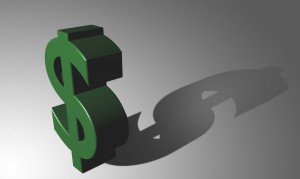
On a fluke, I recently visited BlockBuster for the first time in 4 years. Between Netflix and Redbox, I never really consider renting a movie from the expensive brick and mortar place. Walking through the store, I could almost smell the death of their business. Their competitors have displaced them. Even though they’ve changed their pricing to a daily fee, the perception of the expense remains.
The wrong pricing structure creates a problem of perception; even when the pricing is adjusted, the perception lingers. Blockbuster had a reasonable business. Renting a movie for $4 was cheaper than going to the theater or buying the movie. They were charging less than the value they provided. But alternatives appeared that offered a better cost-to-value ratio (Redbox). Once customers find this alternative and switch, they rarely come back to check again and possibly even harbor a grudge that Blockbuster “took advantage” of them for all those years. So even though Blockbuster has corrected it’s business model, it’s not sufficient to make me change.
This problem doesn’t come only to existing businesses that are disrupted, it can also come when introducing a new product by setting the initial price too high. Pricing is a tough nut to crack for any new business. We are motivated to price a product high so we don’t leave money on the table. We worry that once it’s left on the table, we won’t be able to charge more in the future. There are times when pricing high works well. Apple and Bose are classic examples of charging a relatively high price and never putting their goods on sale. People simply expect to pay that price and their goods become prestige items. While we all like to believe that our product can do the same, if we aren’t careful, we can fall into the same trap that Blockbuster finds themselves: perceived as being too expensive and unable to change that perception.
While existing businesses will be forever plagued with the innovators dilemma, new business products must take a more process oriented structure to price. Not based only on the value provided, but taking into deep consideration the alternatives that customers have. Early in the development of the product, we should interview prospective customers to understand what they would be willing to pay. In the negotiations with early customers, we must identify how they perceive the value and what the product is worth to them.
Setting the right price at the onset is critical to the success of any business, yet difficult to do. Bon courage.

Leave a Reply